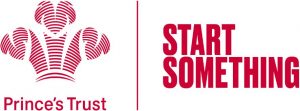How to Conduct a Fire Drill
Conducting a fire drill in the workplace is a great way of preparing staff for an emergency. Everyone in the building should be familiar with fire evacuation procedures, fire alarms, extinguishers and fire exits.
For your company to be able to maintain compliance with workplace safety regulations, it is essential to conduct regular fire drills.
The purpose of a fire drill is to ensure that everyone knows what they should do in an emergency situation. It helps keep people safe and staff motivated and it’s a great opportunity for your staff to bond and work together as a team.
In order for you to keep everyone safe in the event of a fire, you need to know exactly what to do, and so do your staff. Things can get quickly out of control in the event that a fire breaks out, so you must ensure everyone is on the same page.
FIRE STRATEGY – ARE YOU ACCOUNTABLE? SPEAK TO AN EXPERT
This is achieved by planning and executing regular fire drills. However, largely due to the threat of fear, many business owners are oblivious to what they should be doing in an emergency situation. So, in this article, we will walk you through the steps you need to be taking to complete a successful emergency fire drill.
Let’s get started!
Create an evacuation plan
Before you conduct a fire drill, make sure to create an evacuation plan. Your employees should be well-versed in the plan, so they’ll know exactly what to do when the time comes.
When you’re a small business, it can be difficult to make employees understand the importance of having an emergency evacuation plan.
But in reality, having a plan is critical for your employees’ safety, and for your bottom line. When employees know exactly what to do when there’s an emergency, they’re less likely to panic and more likely to help evacuate other coworkers. And that means less injury and property damage and more productivity when you’re back up and running.
Here are some steps you can take to make sure your employees are well-versed in the plan:
- Make sure they know what the plan is, what their responsibilities are, and how they fit into it all. Be sure they know where they should go once evacuation has begun (if possible).
- Practice! Practice evacuation exercises with your staff so they can feel comfortable with their roles during a real-life situation. It’s also important that everyone knows what the drill sounds like so they don’t get confused if they hear an alarm while working alone or at home late at night (this happens surprisingly often).
- Create a way for workers who aren’t onsite during regular working hours (like those who work from home) to get. Fire safety in the workplace.
The evacuation plan should also include:
- Where people should go during the fire drill
- How long it will take for everyone to get out of the building
- Any obstacles that may exist inside or outside of the building (such as crowds)
- Any special equipment or tools needed for the evacuation process
Have a Question? Give us a call on FREEPHONE:0800 999 11 25
Educate employees
A fire drill is a way to educate employees and make sure they know how to be safe in case of a real fire. You can conduct a fire drill anytime, but it’s best done when everyone is in the office so they’re all present.
First, make sure your employees know that you’re having a fire drill so they don’t panic when they hear the alarm go off. Then, give them instructions on what to do: evacuate the building using an exit route (the safest way) or stay put and use a telephone if possible.
- Make sure all employees know what their responsibilities are during a fire drill.
- Give them time to prepare for the drill, such as getting their coats and hats on.
- Make sure they know where they should go if there is an actual fire, such as the nearest exit or safe room.
- Let them know if there is a designated area where they should meet after the drill so you can go over any questions or concerns that may have arisen from it.
Rally point
It’s important to make sure everyone knows where the rally point is. In the event of a fire, everyone should head there immediately.
The rally point should be clear and visible from any place in your building. In addition, it should be a place that people can easily get to without running into any major obstacles (like other people). It should also be easy for people who are blind or deaf to find their way to the rally point. Fire evacuation procedures in the workplace
When choosing a rally point, think about whether you’ll need to evacuate by foot or vehicle as well. If you’re evacuating by foot, you’ll want a location that’s close enough that people won’t get lost on their way there but far enough away that they don’t have to walk through danger zones like open flames or smoke-filled hallways.
Pick a day and time for the drill
The first step to performing a fire drill is picking the day and time. You should pick a day when everyone is available at the same time.
The best time is in the morning when everyone is less busy and has more time to focus. Night-time can be disruptive, especially if you have an active shift change.
Also, consider conducting your fire drill during a time of day when there are no scheduled meetings or other activities that may distract from the drill.
Make sure everyone knows about it
One of the first steps to conducting a fire drill is to make sure everyone knows about it. This means that you should inform all employees in advance so that they’re not caught off guard and can take the time to prepare themselves for the drill.
In addition, you’ll want to make sure everyone knows where they should be evacuated to during the fire drill. If there are multiple locations available, make sure that employees know where each one is located and how far away it is from their current location.
Finally, if there are any special instructions or rules regarding evacuation procedures, make sure those are clearly spelt out as well.
Place observers
A fire drill is a great chance to assess how your employees perform under pressure. You can also use this time to see how well they work with each other and how they handle their own responsibilities when problems arise.
To do this, you’ll need to assign people who can observe and assess performance during the drill. Some of the key things you want them to look for include:
- How quickly people respond to the evacuation, and whether or not they followed the plan.
- How well employees worked together during the drill (did anyone fall behind because someone else did not follow instructions?)
- Whether or not employees took extra steps to ensure their safety throughout the process (for example, making sure everyone was wearing shoes)
Hold a meeting before starting
Before you can conduct a fire drill, you’ll need to hold a meeting to discuss it. This meeting should include all of the relevant staff members and managers so that they can be prepared for what’s going to happen during the drill and also be able to provide guidance on how it should go.
- You’ll want to cover the following topics:
- What are we doing? What is this practice designed to accomplish?
- Who are we doing it for? Who will be involved and what does their role entail?
- When will we do it? When is the best time for everyone involved?
- Where will we do it? Where will we be performing the drill so that everyone can get there without issue or confusion?
Start the drill
1. Announce the drill over the loudspeaker.
2. Ask everyone to leave their desks, go to the nearest fire exit, and walk down the stairs and out of the building in an orderly fashion.
3. Have a staff member keep track of anyone who is still in their seat after evryone has left the building.
4. When everyone is outside of the building, have them stay there until you give them permission to return inside. You may want to have one or more staff members stationed on each floor as exit monitors, checking periodically to make sure no one is staying behind on purpose or accidentally.
Conduct Regular Fire Drills
Fire drills are an important part of a company’s safety plan and they should be conducted on a regular basis.
The most important thing about fire drills is that you should attempt to make them as realistic as possible. The more realistic the drill, the more prepared your employees will be when faced with an actual emergency situation.




Dangerous Substances and Explosive Atmospheres Regulations 2002 (DSEAR) click here.
If you would like to arrange a free fire risk consultation, contact us
My Fire Safety. Co-Space, 25 Town Square,
Stevenage, SG1 1BP. 0800 999 11 25



Sorry, the comment form is closed at this time.